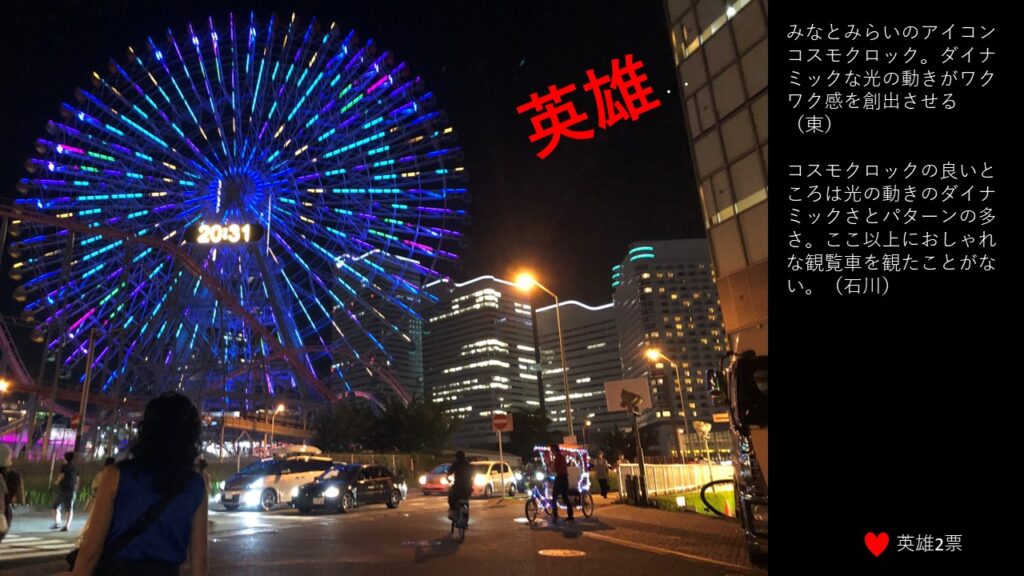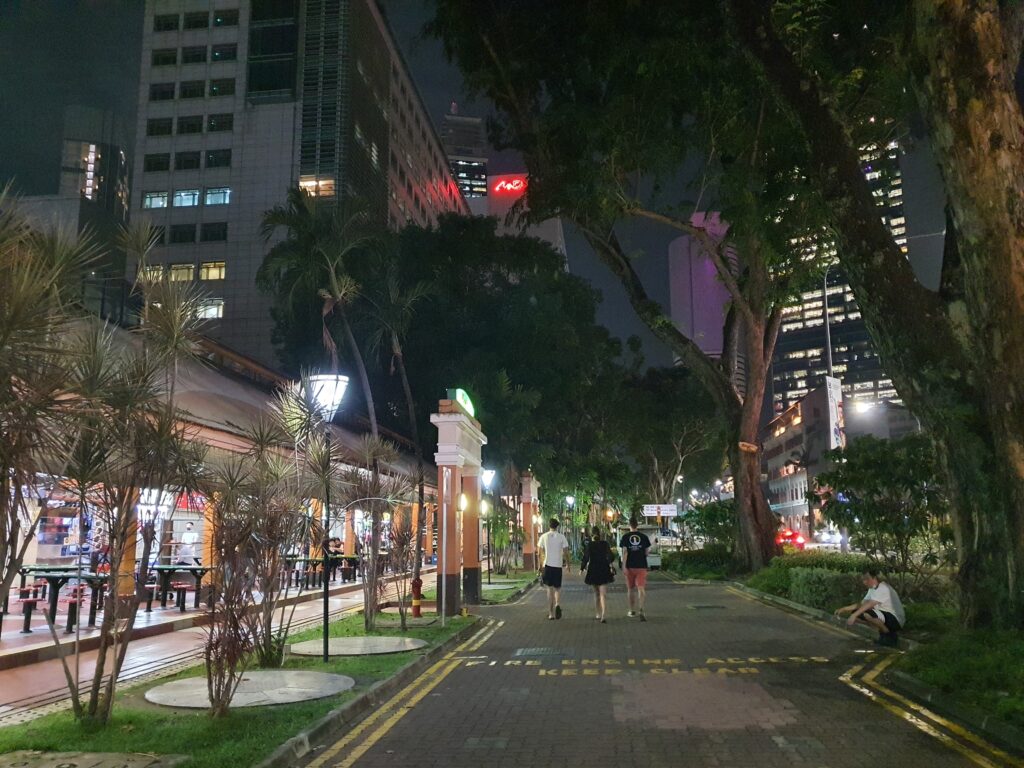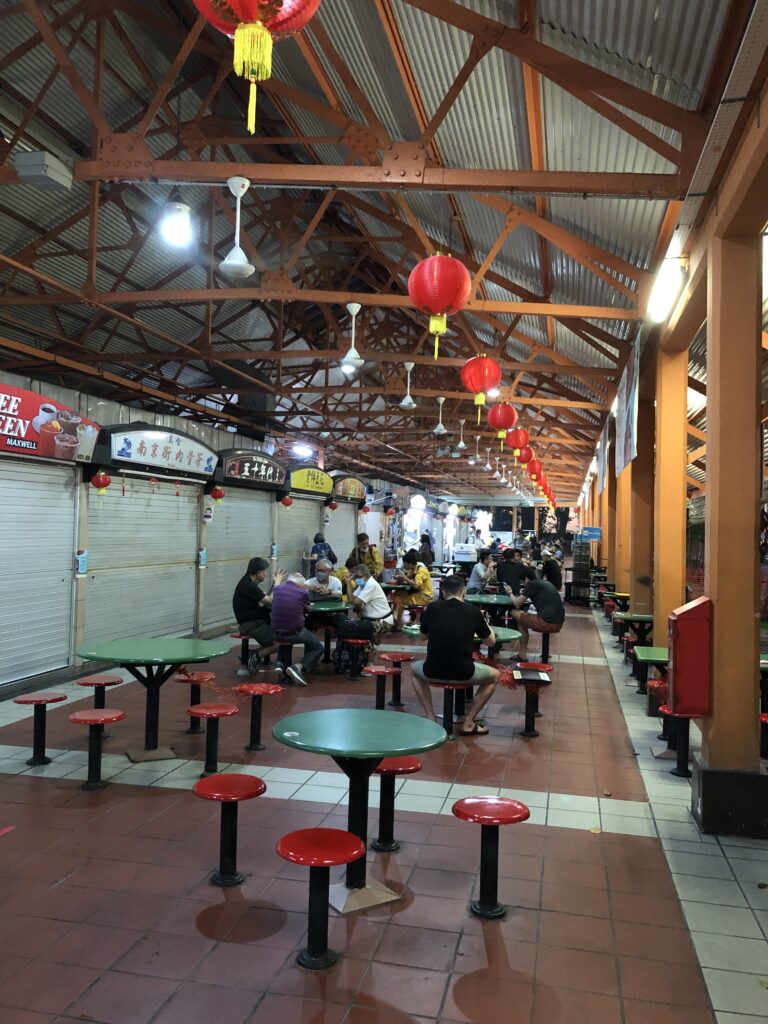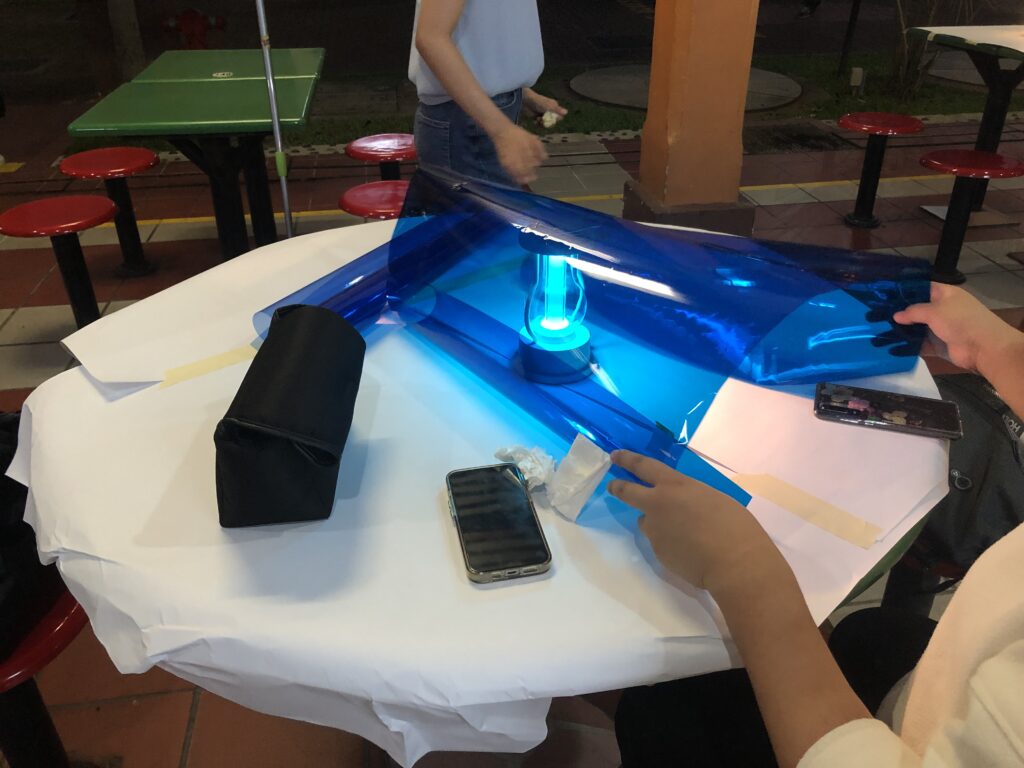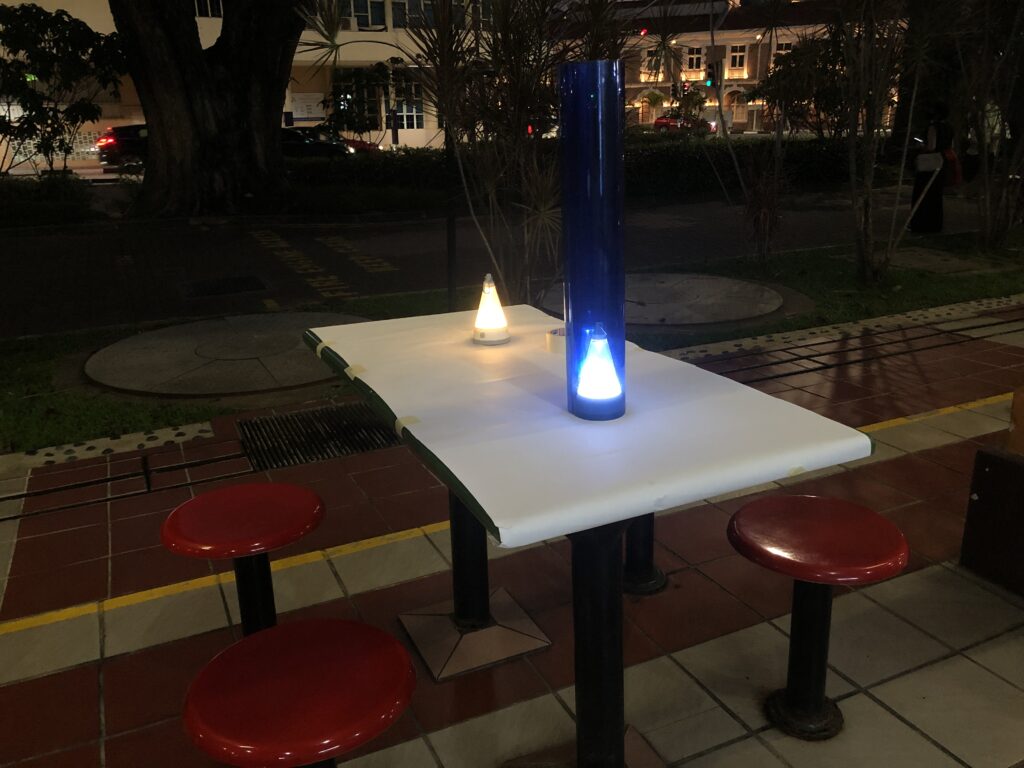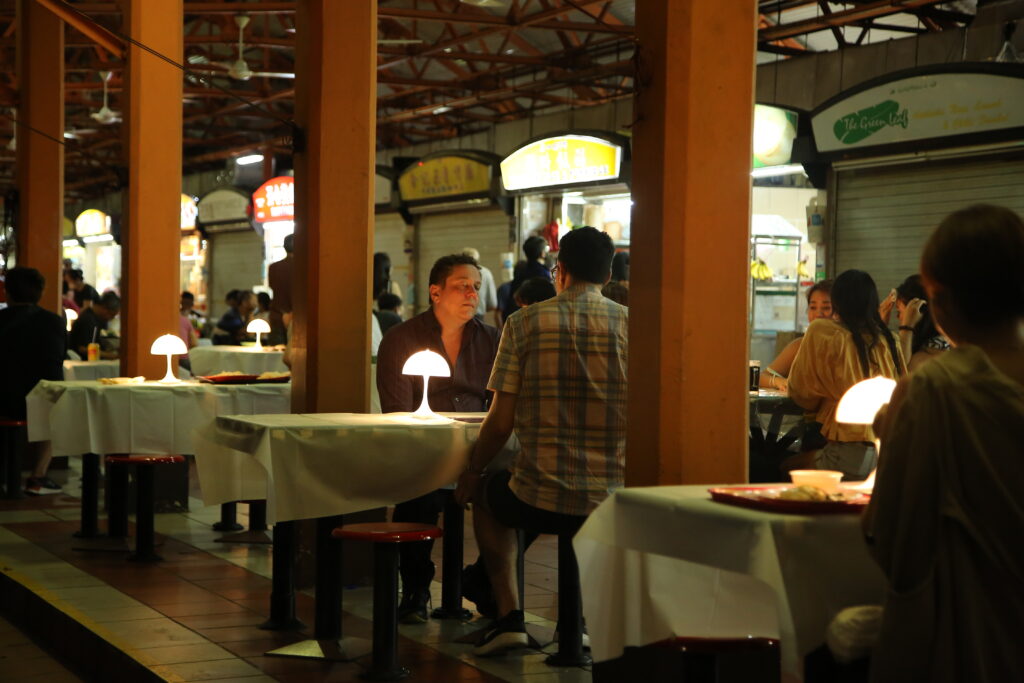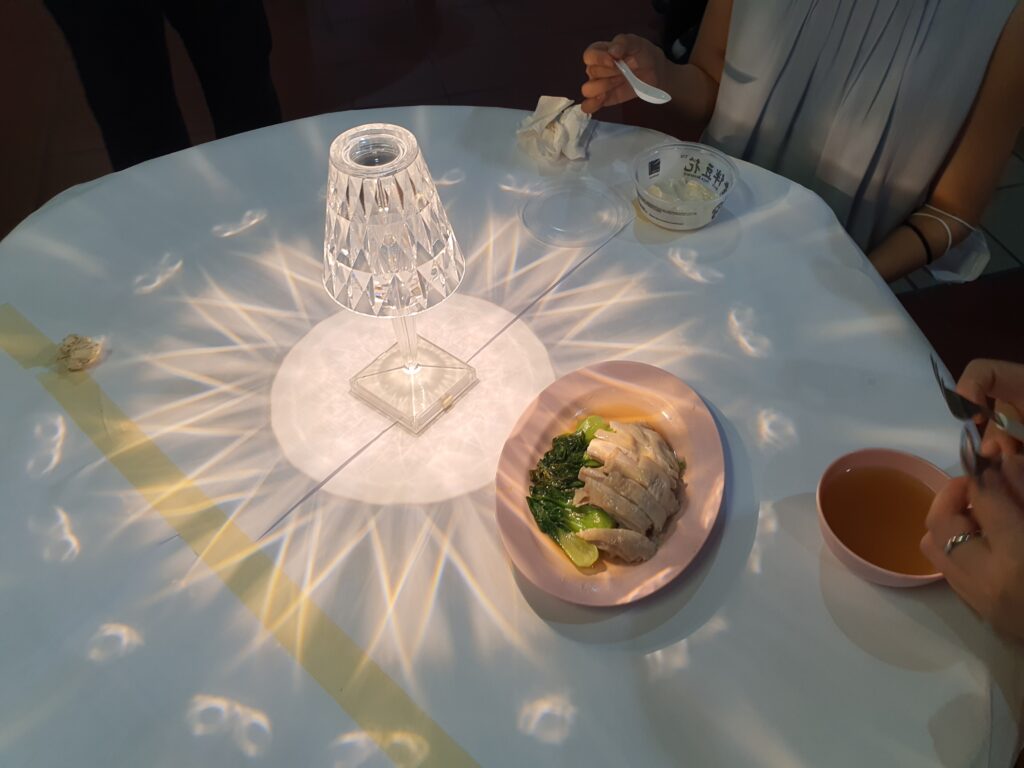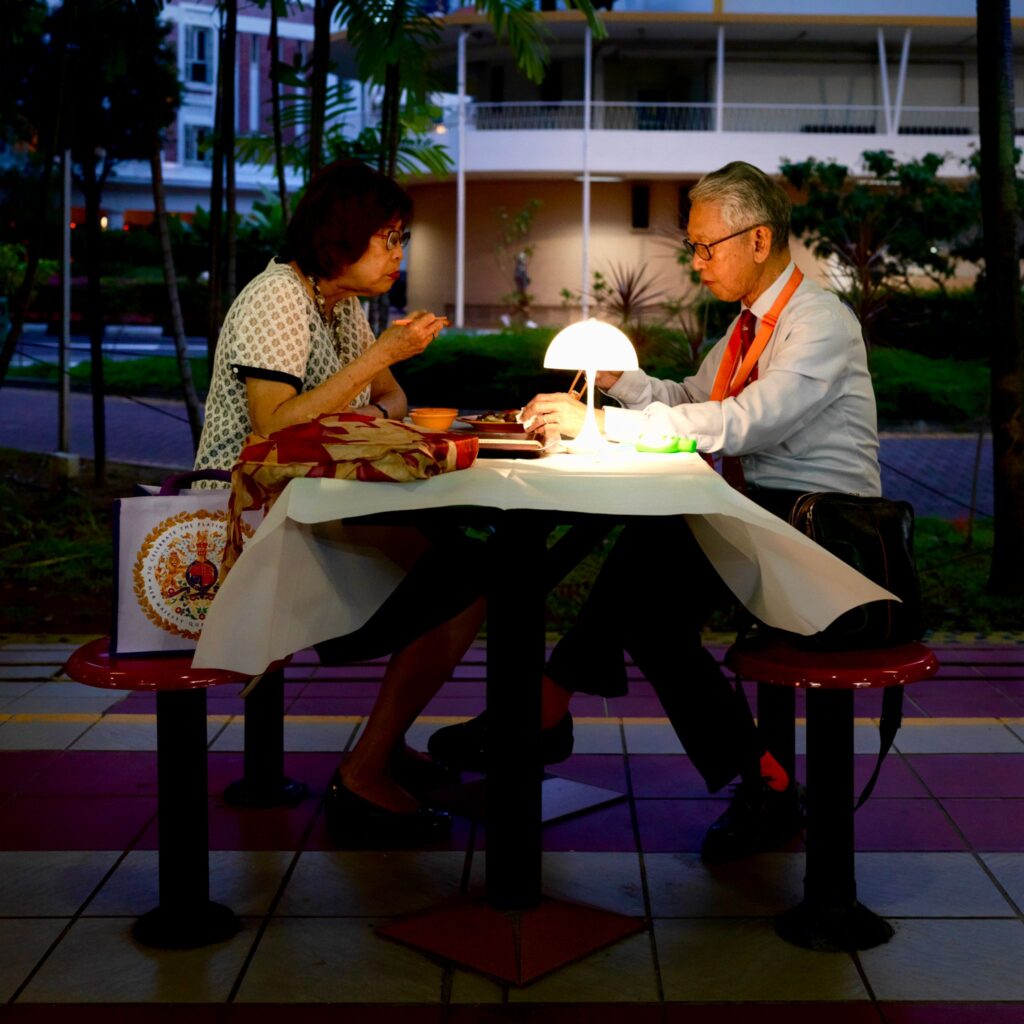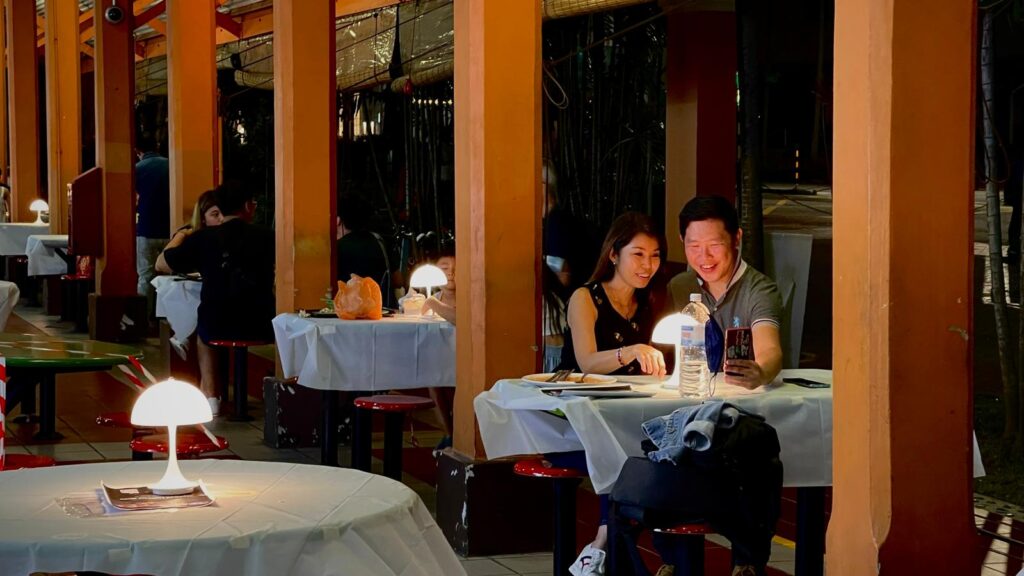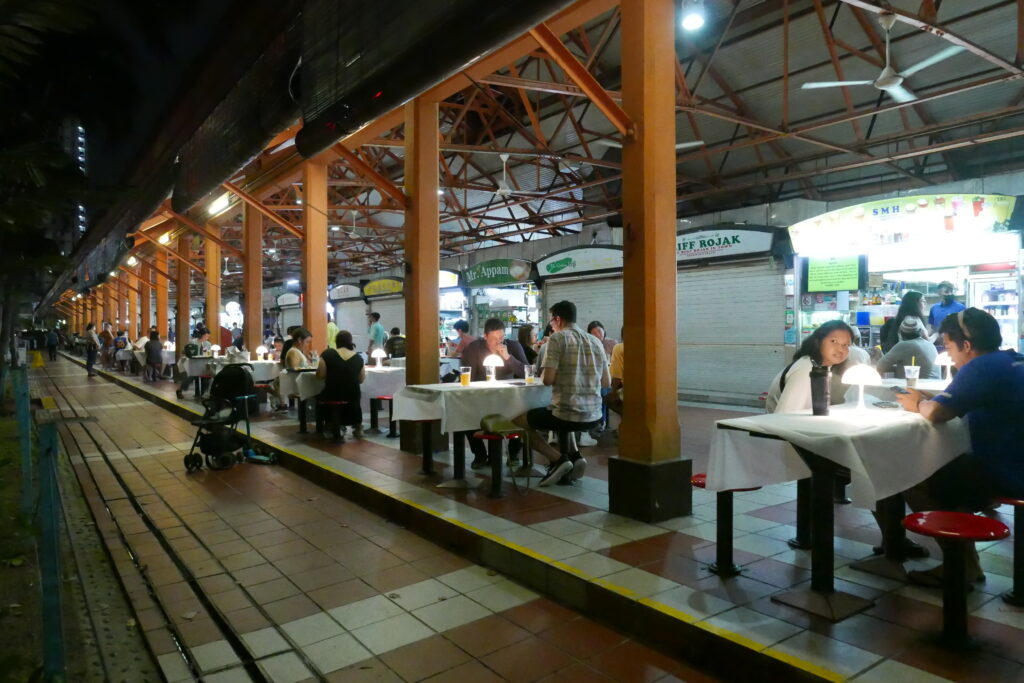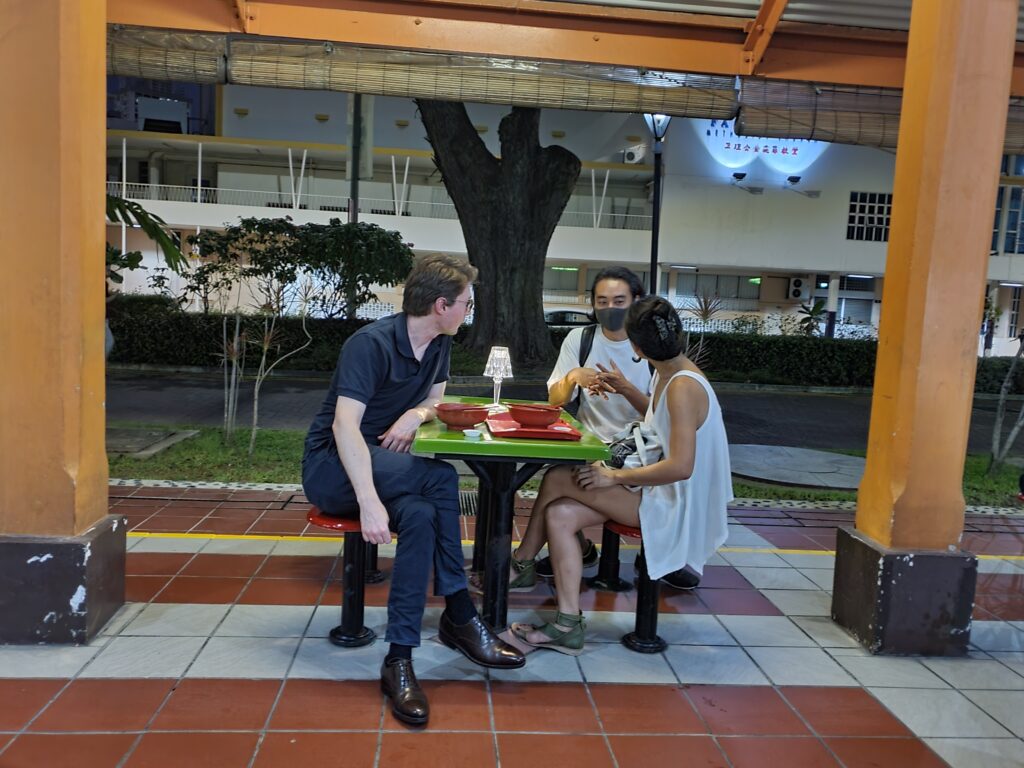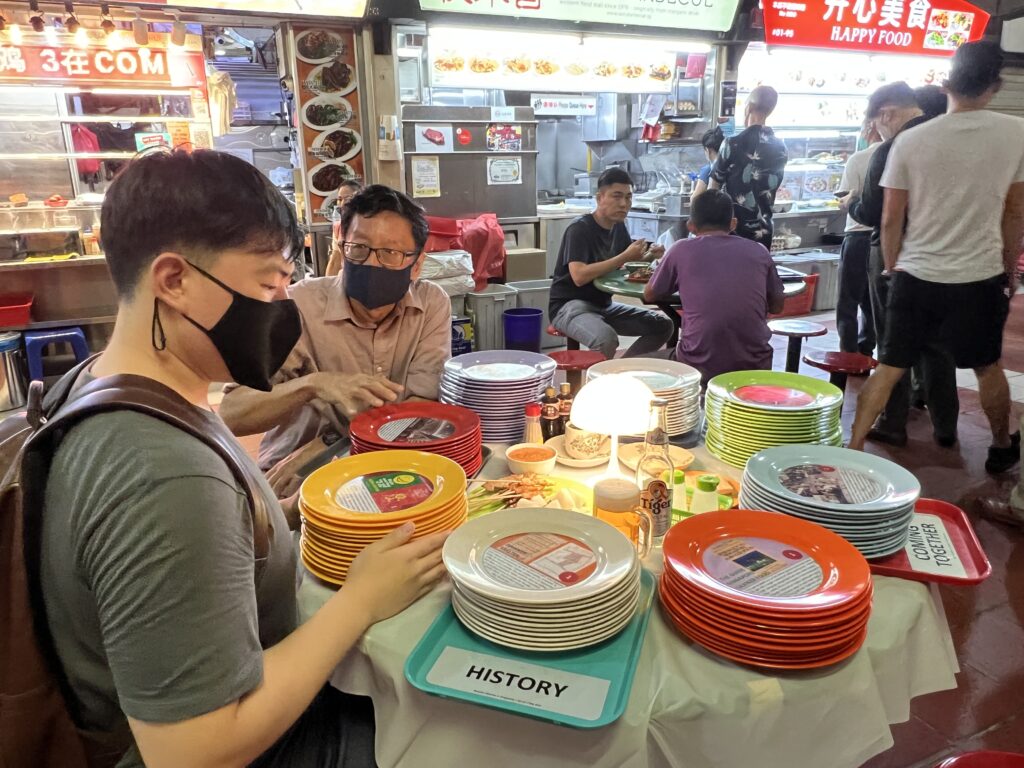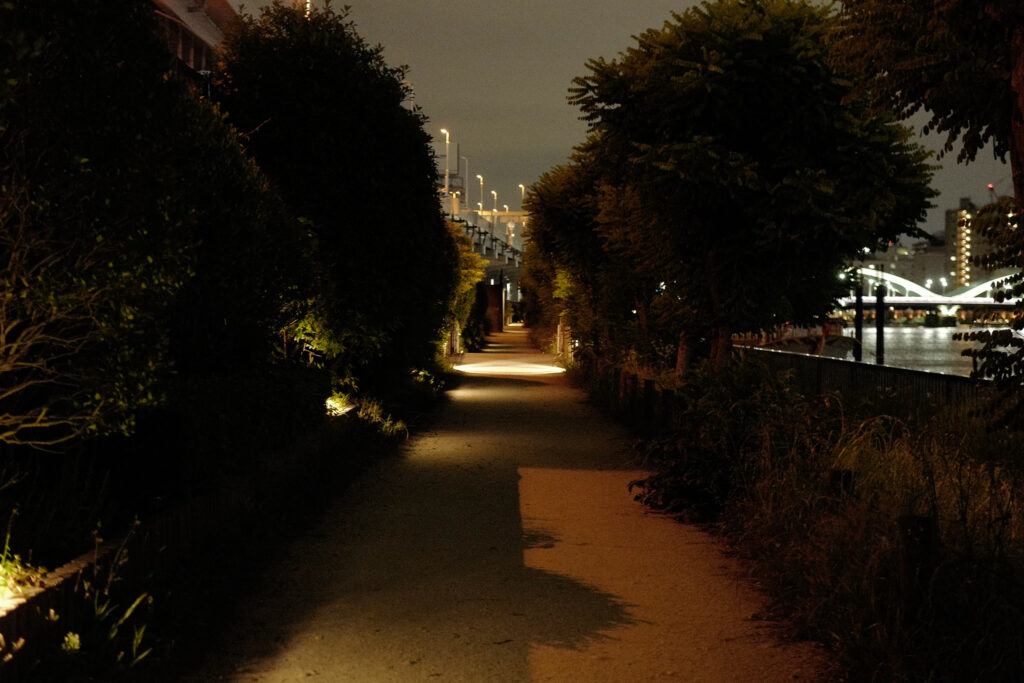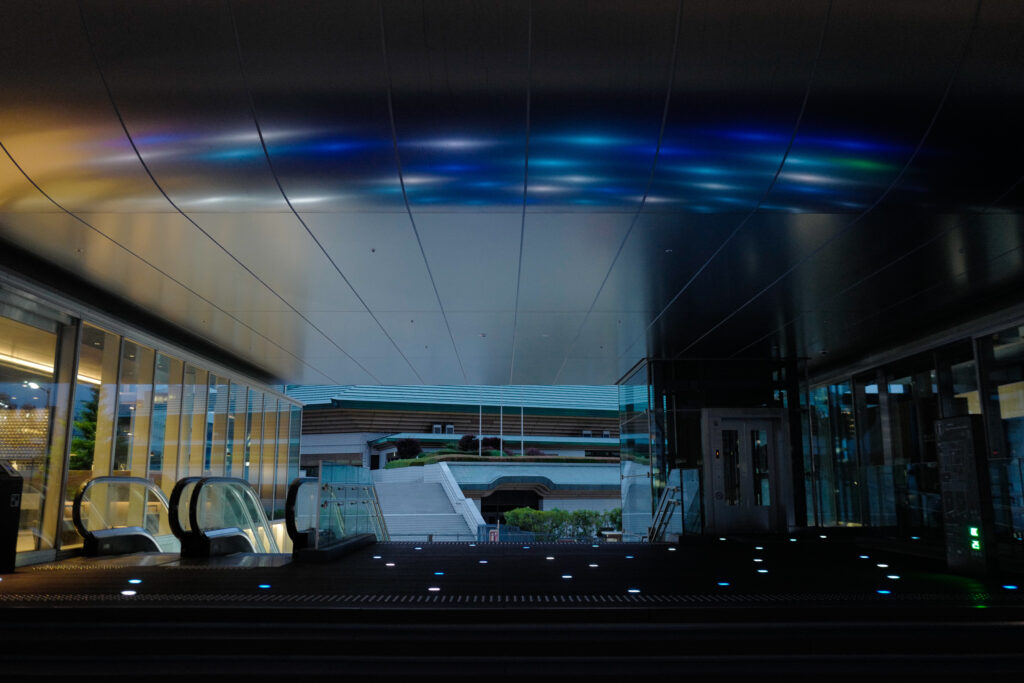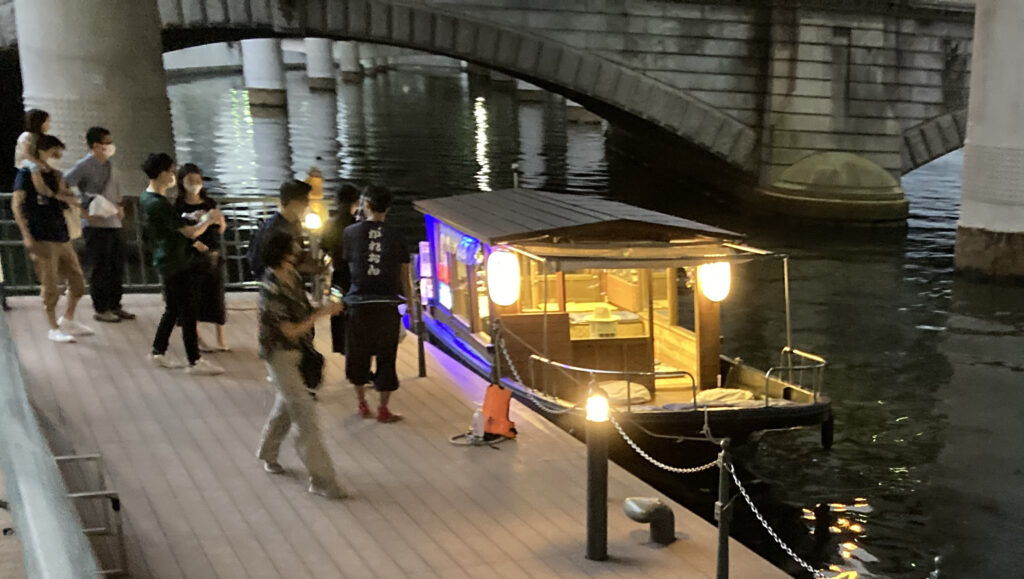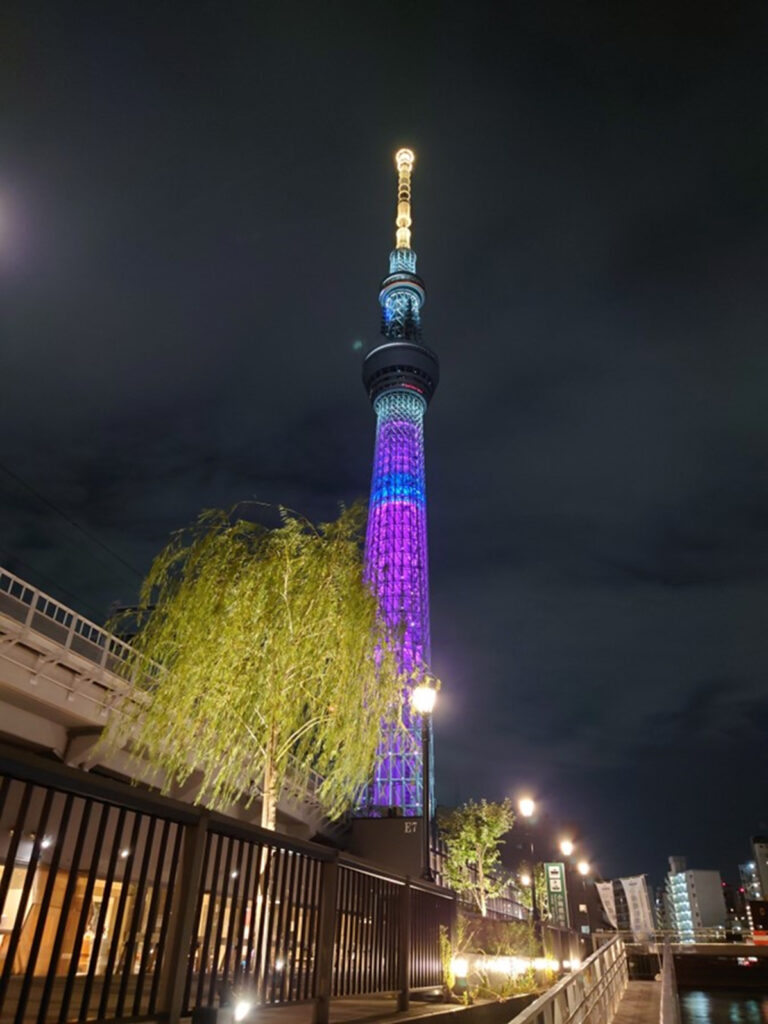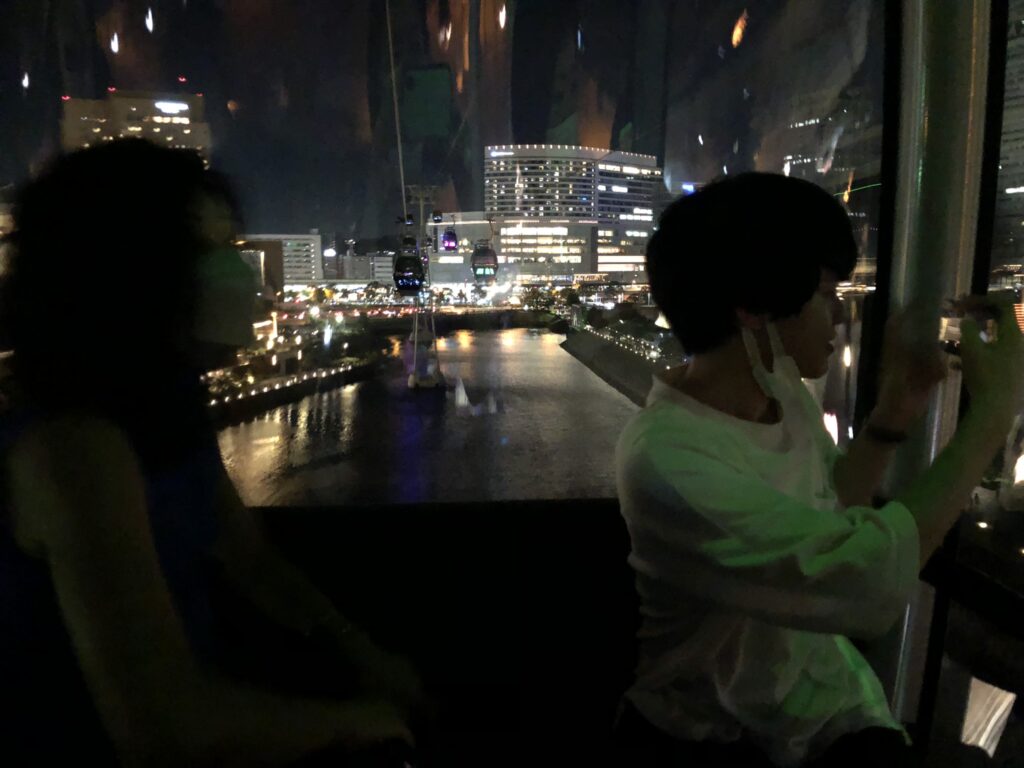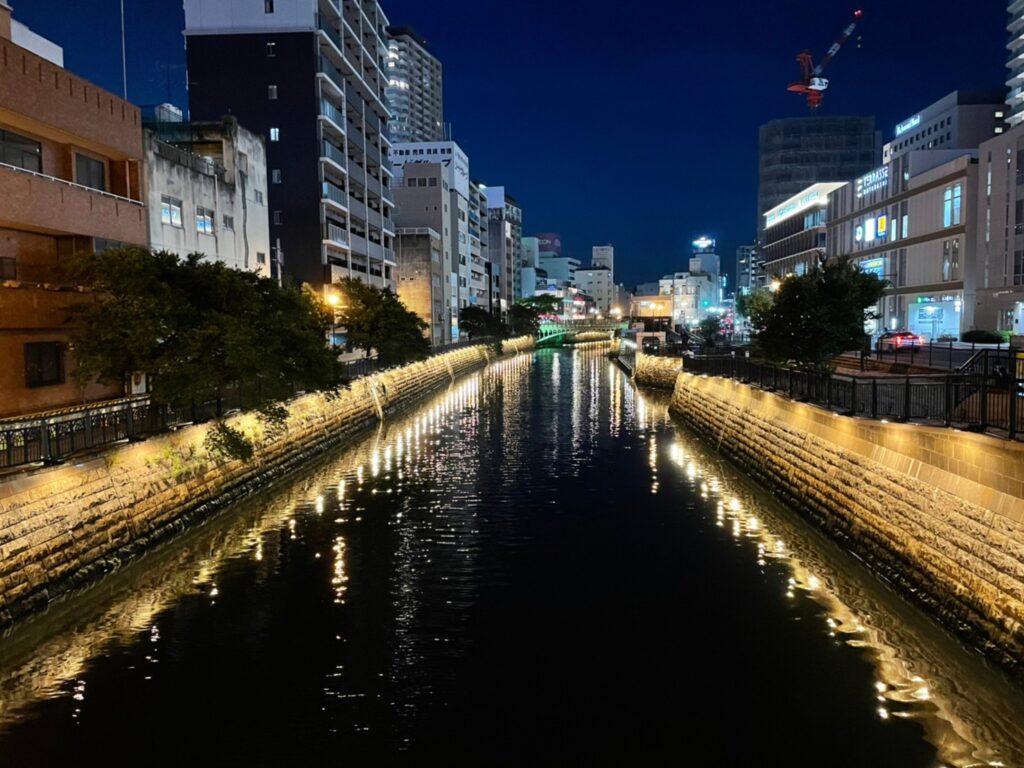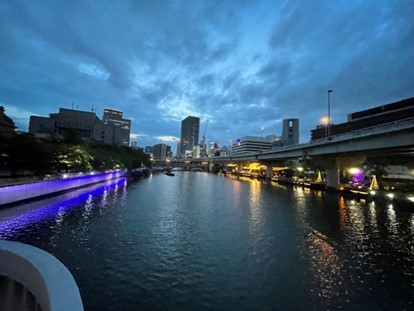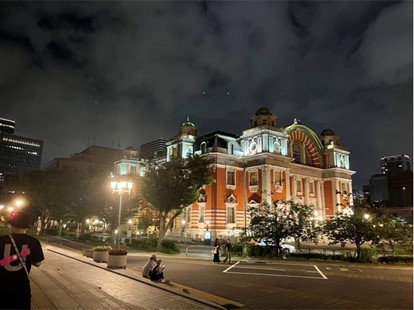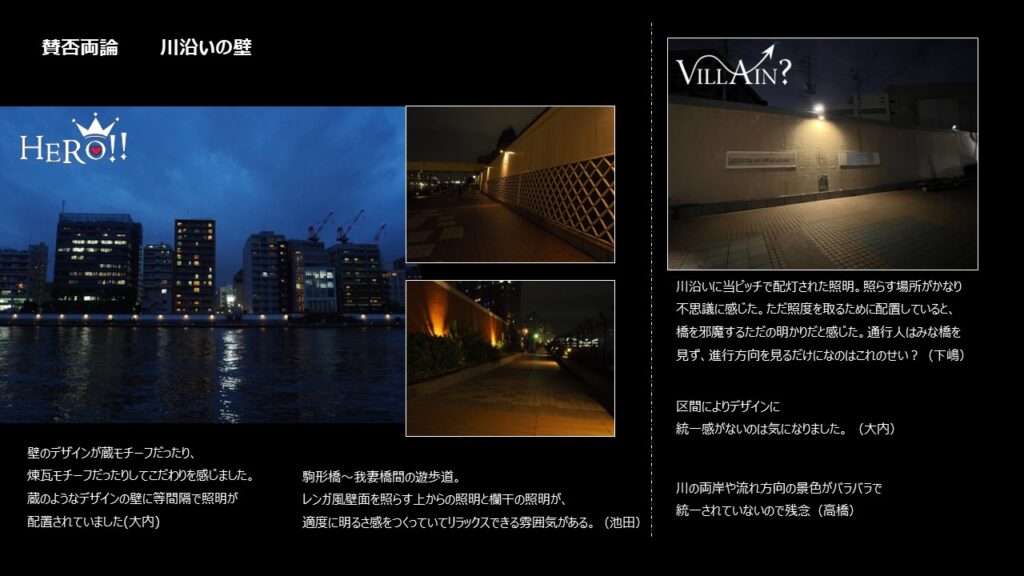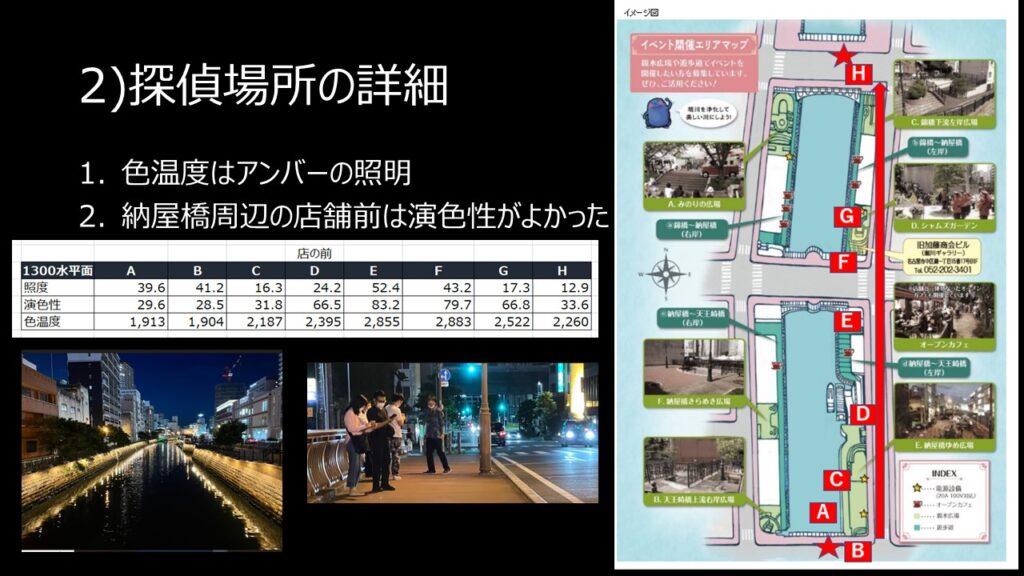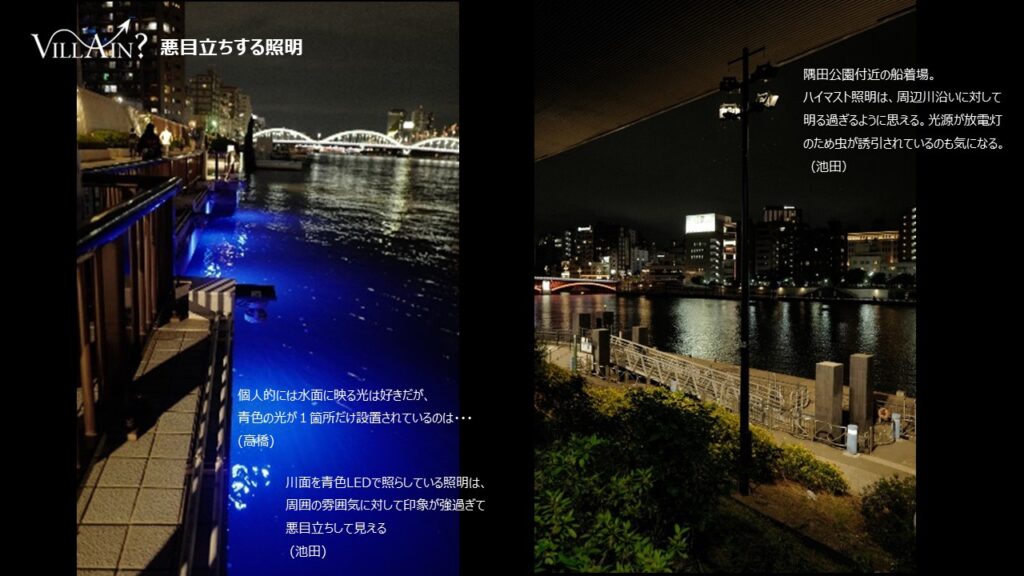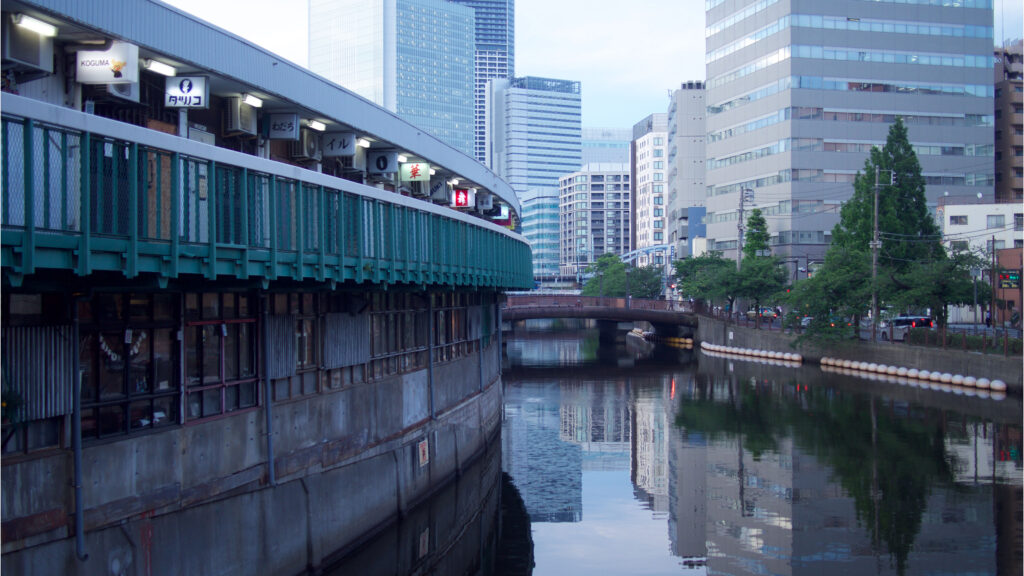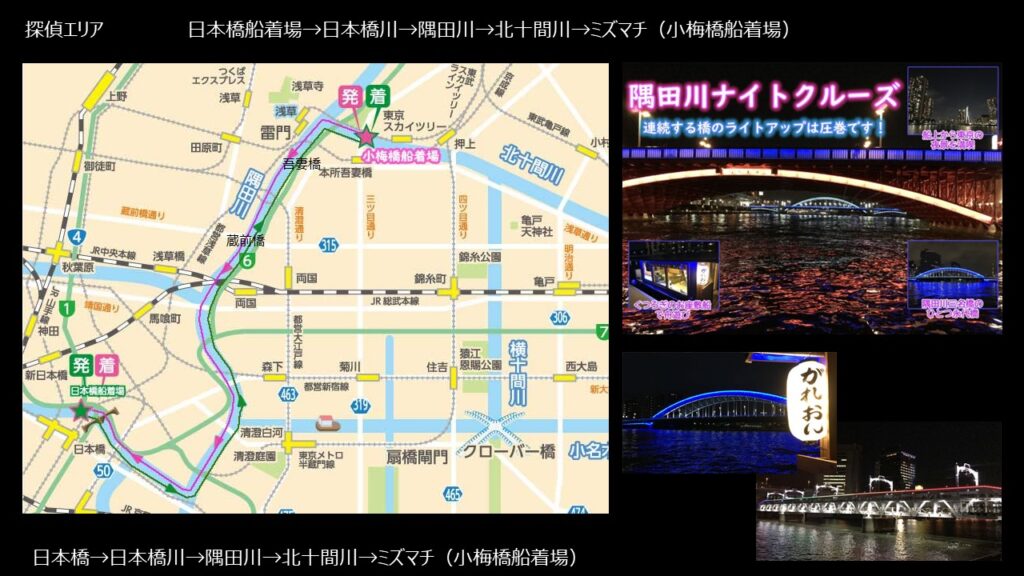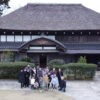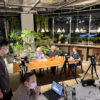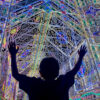Date of Issue : September 19, 2022
・Activity 1/ Maxwell Light-up(2022.07.08-09)
・Activity 2/ Small-Group Night Walk Vol.069(2022.06&07)
・Activity 3/ Round Table Discussion Vol.068 @ZOOM(2022.07.29)
Lighting Detectives Maxwell Light-up Maxwell Food Centre, Singapore
2022.07.08-09 Sherri Goh
Changing the lighting ambience of Maxwell Hawker Centre, part of the UNESCO-protected hawker culture.
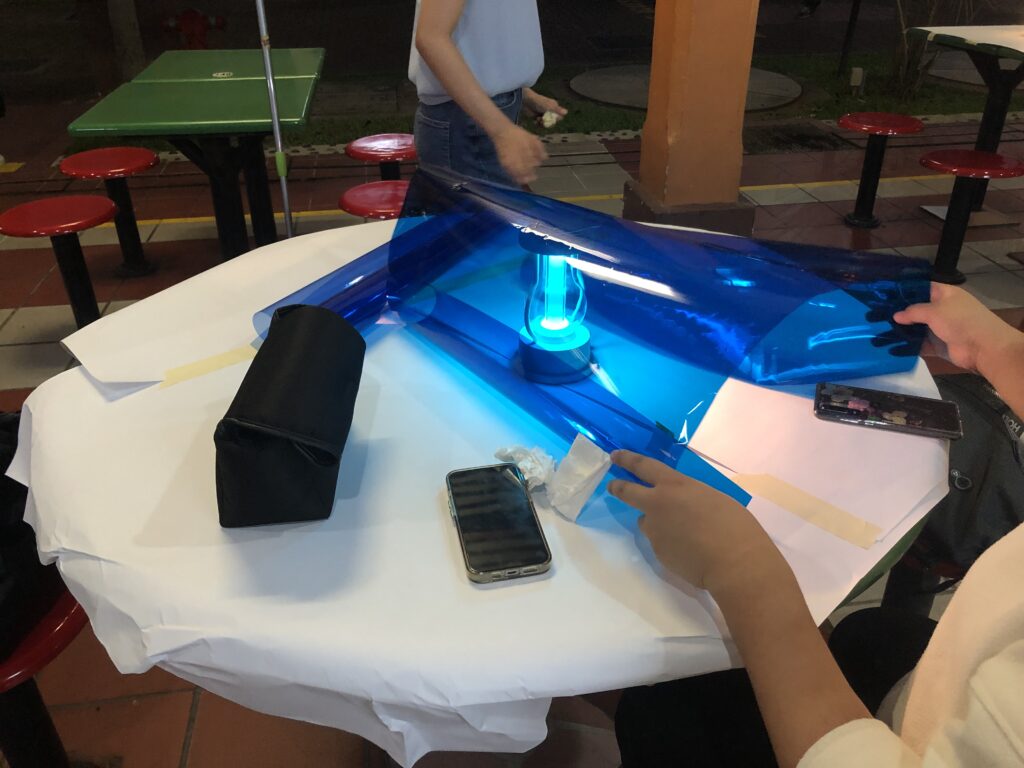
SINGAPORE:
As part of the closing of Venice Architecture Biennale Homecoming Exhibition that was held at the Urban Redevelopment Authority (URA) from April to July, we fought to do something at Maxwell Food Centre due to its prominent reputation, close proximity to the exhibition and to celebrate hawker culture (in line with the theme of the exhibition).
It was our first time working with the National Environmental Agency (NEA) as they run the local hawker centres here. Supported by Louis Poulsen, we managed to have a successful exercise that had many members of the public take part.
We had a ambitious plan that was to transform the space by implementing ambient, coloured linear light, along with spotlights to emphasise the tables. However, that was phased out as we coordinated with officials to find that it would require formal licensing and permits to enact the entire idea into place. To obtain sufficient funding also meant that we would need to create something that would last around 6 months with many safety protocols covered.
Hawker centers are far and many in Singapore. We put out a survey to the members of the public to take. We see that more than 58% of respondents actually dine at hawker centres multiple times a week. It is part of the regular routine of the average Singapore resident.
Scaling down the plans, we realised that it was more befitting the culture of “cheap”, “fast” and “good food” that the hawkers are well known for. We needed to implement something that did not make the place look too fancy with too many tricks.
We were worried that people might be intimidated and might shy away. We wanted to elevate the dining experience whilst keeping that approachable nature of the centre. The atmosphere should not convey the ambience of a fine-dining restaurant where there is a preconceived notion of higher cost, but a low-key method to allow people to comfortably eat and appreciate their meals whilst winding down after a long
day; perhaps gathering with friends to socialise after a hard day’s work. A survey of the site was done and we found that the existing lighting levels was not as high as we throught.
Ambient light was mostly contributed by signage and stall lighting, which made it impossible to modify or turn off due to concern on the impact of business for the stallowners. However, we discovered that the colour rendition of the exisiting environment was very low. Providing a fixture that with higher CRI made a big difference in the mood and the visuals of food.
We decided that a table lamp with warm colour temperature and high colour rendering was sufficient to make a change in ambience, with white tablecloth to increase the brightness on table surface in contrast to the proprietary dark green.
The event itself spanned 2 days, Friday 8th July – Saturday 9th July. It was held for 3 hours at the food center. Due to material constraints, we selected the row of tables facing the main road to have perceived darkness from the night sky and create a different visual of the hawker environment for people passing by.
Some people were hesitant to use the tables with our setup as it was intimidating to be the first few in a seemingly exclusive event. However once we were there to explain the setup and that it was free for public to use, people started to warm up and were soon excitedly occupying the tables and taking many pictures of their experience. We conducted interviews and a survey for feedback and the general census of the event. There were mostly positive feedback, with select individuals that were very passionate about extending this study to other hawker centres for more members of the public to have the opportunity to experience the setup.
We also had the privilege of having Professor Lai Chee Kien from NUS School of Architecture bring his exhibit down from the Venice Biennale Homecoming Exhibition to showcase at Maxwell as a educating marker on Singapore hawker culture for the public to peruse. (Sherri Goh)
Small-Group Night Walk Vol.069
Lighting in Historic Port Towns and Waterfronts – Tokyo, Yokohama, Nagoya, Osaka
2022 June & July
Shiho Ishizaki + Ryuji Hatta + Akiko Kondo + Yuka Suzuki + Jinrui Tian + Noriko Higashi
As large-group night walks are still not possible, this time we divided into five areas and conducted small-group night walks. The number of participants varied from 3 to over 10 per area, but everyone seemed to thoroughly enjoy the long-awaited night walk.
With half of 2022 already behind us, this was the first night walk held this year. Due to ongoing restrictions, large-group walks were still not possible. The theme this time was “Lights of Historic Port Towns and Waterfronts,” focusing on waterfront areas in major cities such as Tokyo, Yokohama, Nagoya, and Osaka.
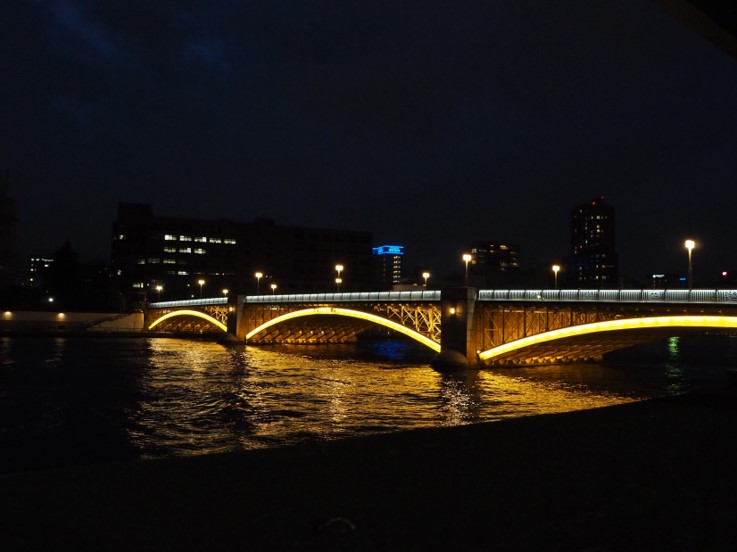
■Tokyo, Sumida River – Land Survey
The Sumida River land team started from Ryogoku Station and walked along the riverside “Sumida River Terrace” for their survey. The highlight was, of course, the illuminated bridges, which received generally positive feedback from the members. Among them, Kuramae Bridge, lit in warm white tones rather than colorful lights, was the most popular. It was praised for its “warmth,” “the way the light hits the steel framework,” and “the beautiful reflections on the water.”
On the other hand, in this era moving toward a sustainable society, some questioned whether bridge illumination itself is truly necessary.
The “Hulic Ryogoku River Center” also received high marks. Blue and white lights embedded in the piloti deck cast reflections on the curved ceiling shaped like a ship’s hull, creating a beautiful scene.
Although efforts have been made to improve the Sumida River Terrace, the lack of consistency in the riverbank’s design became a “villain.” Some areas show well-maintained lighting and landscaping, while others are overgrown with broken fixtures. The wall designs also vary by section, creating a disjointed appearance. This again highlights how difficult it is to cultivate a unified atmosphere when multiple managers are involved.
That said, even on a weekday during the survey, the area was bustling with people walking and jogging, showing that it remains a beloved local spot. (Shiho Ishizaki)
■Tokyo – Sumida River (Water Route)
This time, we boarded a boat at Nihonbashi Bridge to investigate the lights along the waterfront.
Cruising under about 20 bridges, we observed many of them illuminated. One that particularly stood out was Kuramae Bridge. Its combination of light-blue railing fixtures with warm-toned pier lighting conveyed both elegance and a sense of history. As the viewpoint shifted, so did the experience: from distant views to mid-range perspectives, and finally looking up close from directly beneath, each angle revealed a different interplay of structure and light. As for the riverside nightscape, some areas felt overly bright, while others were too dark. A more balanced overall control of brightness would create a far more harmonious scene. Still, from the boat, many views were undeniably beautiful—enhanced by reflections shimmering on the water, the sound of splashes trailing the boat, and the refreshing summer night breeze that made it a multisensory
experience.
Approaching the final stop at Mizumachi (Koume Bridge Pier), the Tokyo Skytree loomed larger in view. From the boat, participants were reminded that Tokyo is a city built upon its Edo heritage, and the Skytree’s illumination carried that history forward, making it all the more striking. (Ryuji Hotta)
■Yokohama
We strolled along Yokohama’s waterfront, where historic landmarks of the port blend seamlessly with modern urban attractions. The Yokohama Red Brick Warehouse, one of the city’s most iconic historic buildings, was bathed in warm orange light. With little other lighting around it, the atmosphere felt all the more enchanting—its glowing warmth contrasted against nearby modern illuminations, perfectly capturing Yokohama’s unique character.
Nearby, the area around Zou-no-hana Park also featured many charming structures, where classical-style lighting highlighted their façades and evoked a sense of exotic nostalgia.
A new highlight was the Yokohama Air Cabin ropeway, connecting Yokohama World Porters with Sakuragicho Station. From the cabin, the famous Cosmo Clock Ferris wheel could be seen, with the city lights cascading down from above—a fresh and exhilarating way to take in the nightscape. The glow spilling from the surrounding towers added to the beauty, making it a highly recommended evening attraction.
Minato Mirai left a lasting impression as a district that continues to develop while preserving its historical architecture with great care. Although some buildings and areas had lighting that fell short of expectations, we hope the city will continue to evolve while keeping its port-town spirit and heritage alive. (Akiko Kondo)
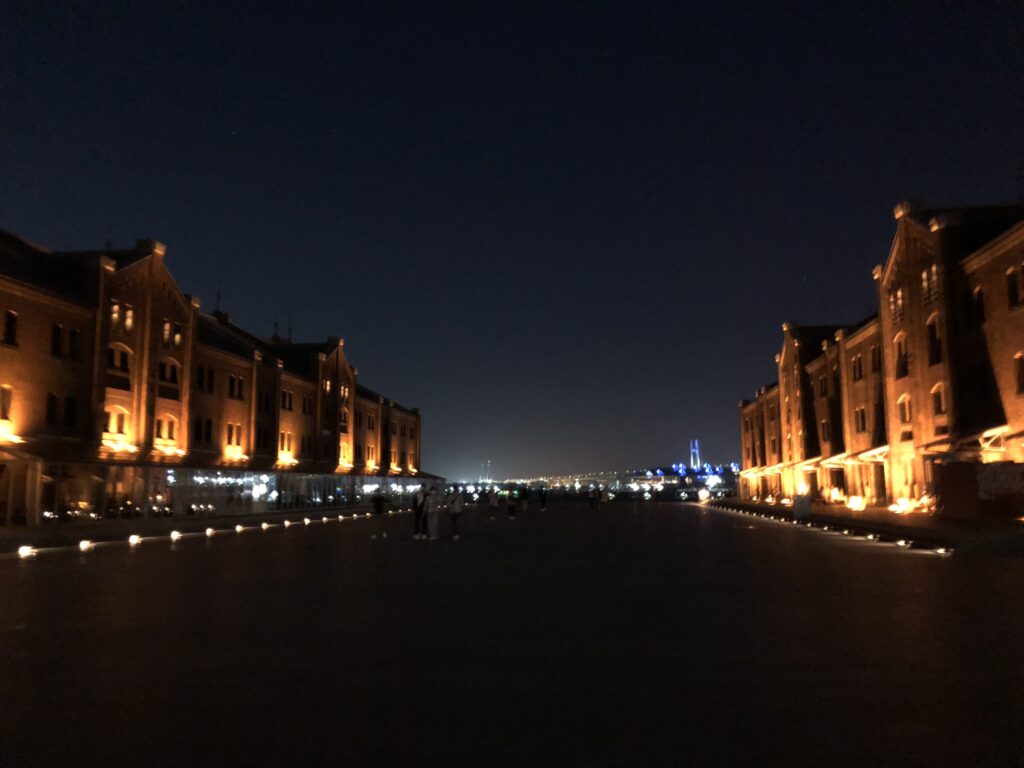
■Nagoya – Along Horikawa River
The Horikawa River area in Nagoya has been undergoing lighting development since a social experiment was first conducted in 2019, with permanent installations progressing in 2022. Ambercolored lights now illuminate river embankments that had never been lit before, their reflections on the water surface creating a pleasant sense of brightness.
Moving along, we suddenly encountered a section lit with blue light reflecting on the water. It was explained that this color choice was meant to highlight the former waterway leading to warehouses, creating a sense of depth. In reality, however, it only served to accentuate floating trash, making it feel inappropriate.
Nayabashi Bridge was lit in green. While some participants felt it worked beautifully during the willow season, others thought the color felt unnatural, leading to divided opinions. In contrast, the Old Katō Shōkai building was lit in white, with willows and gas-lamp-style fixtures enhancing the quintessential atmosphere of the Nayabashi area. Some riverside restaurants even coordinated their lighting to maintain harmony along the bridge, creating a pleasant scene even when passing through by car.
Proceeding to Nishikibashi Bridge, the atmosphere grew darker as the number of shops decreased, but here the amber lighting fit the environment quite well.
For the next city walk, we thought it might be nice to choose a venue near the endpoint so that participants can enjoy a gathering after the exploration. Once again, it turned out to be a delightful and engaging walk. (Yuka Suzuki)
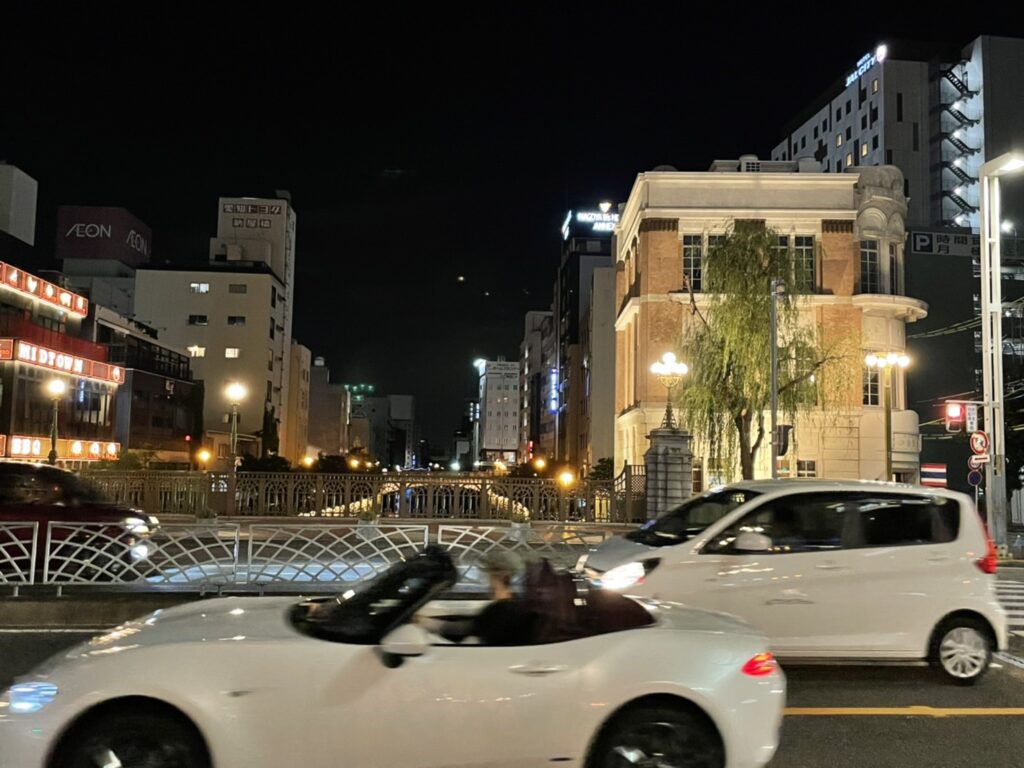

■Osaka
This time, our Kansai team explored the waterside lights around Nakanoshima in Osaka. Nakanoshima is like an island sandwiched between the Dojima and Tosabori Rivers, both tributaries of the Yodogawa. From here, several atmospheric bridges stretch across the Dojima River, creating a classically picturesque cityscape.
One such bridge, Suishō-bashi (Crystal Bridge), immediately stood out as a “hero.” Its retro-style fixtures blend beautifully with the structure, evoking a warm and elegant atmosphere. Namba-bashi was also praised for its retro fixtures—particularly the distinctive lanterns shaped like three stacked dumplings. While they fit perfectly here in Osaka, it’s clear they would never suit the streets of Kyoto, reminding us that urban lighting must harmonize with the local character.
Across the Dojima River, restaurants glowed softly under warm-toned light, creating a refined mood —yet suddenly, a tree lit in jarring purple appeared within the same view. The effect was like being on a cherished dinner date, only to have black-bean sauce splatter onto your crisp white blouse.
The Osaka Central Public Hall, with its retro façade, was another bittersweet case. Although the building itself is stunning, the current lighting design is startling—the upper half of the façade is bathed in green light, visually splitting the building into two. It felt like being served a bowl of rich, delicious chicken broth ramen, only to find it unexpectedly topped with my least favorite herb, cilantro. (Tian Jinrui)
Each team conducted their city walk under the theme of “water,” and we observed a variety of lighting approaches along the waterfront. In some places, the reflection and shimmering qualities of water were maximized to create beautiful scenes, while in others, the use of color made the atmosphere rather eerie, ruining the overall impression.
As waterfront development is expected to continue to progress, we would like to keep observing closely and exploring the possibilities of light in relation to water.(Noriko Higashi)
Round Table Discussion Vol.068 @ZOOM
2023.07.29 Noriko Higashi
This online salon was held for the first time in half a year. The theme was a review of the night walk surveys conducted in June and July, which focused on waterfronts. A total of 26 members participated and reported on their respective night walk surveys.
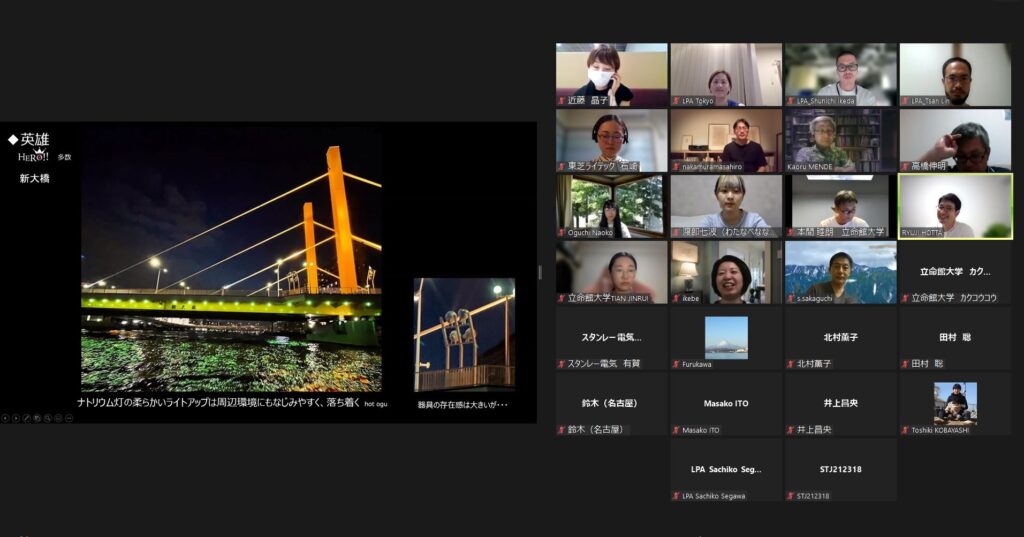
An online review session was held to reflect on the night walk surveys conducted in six locations: Sumida River (land route), Sumida River (water route), Yokohama, Nagoya Horikawa River, and Osaka Nakanoshima. From every team, we heard the same comment: “It was fun to finally go on a night walk survey again!” This reminded us how valuable it is to gather in person, see the same scenery, and exchange impressions directly.
Japan is a country deeply connected to water—seas, rivers, and lakes can be found everywhere. Yet, when asked if we have a strong affinity toward water, one might hesitate. In the process of modernization, many rivers have been covered, embankments fortified, access to water restricted, or buildings constructed with their backs turned to rivers. As a result, waterfronts that used to feel close have now become distant in many urban settings.
At the same time, we can also see many movements aiming to improve waterfronts and turn them into comfortable public spaces. The Sumida River Terrace, Yokohama Minato Mirai District, Nagoya Horikawa, and Osaka Nakanoshima—where we conducted our night walk surveys—are all good examples of this trend. Since waterfront development is not carried out by a single private sector, but involves multiple administrations, stakeholders, and developers, creating a unified waterfront landscape is a major challenge. Particularly for nighttime scenery, guidelines are rarely in place, so each project tends to implement its own independent lighting plans and installations.
This lack of coordination often results in issues raised during the reviews: “no sense of unity,” “lighting doesn’t match the surrounding atmosphere,” “beautiful from the embankment but glaring from the bridge,” and vice versa. The absence of a comprehensive masterplan seems to be the root of many of these problems.
Nevertheless, many pleasant and well-designed spots were reported in each area, and we heard a strong sense of expectation for further improvement and development. Because we had so many areas to review in this online salon, the presentations alone filled up all the time, just as in the previous session, leaving little room for open discussion. This was somewhat disappointing. I felt we need to devise ways to make these salons more interactive and communicative for participants. Beyond night walk reviews, we are also considering other online formats, so please look forward to our future activities. We hope to see your participation again! (Noriko Higashi)
